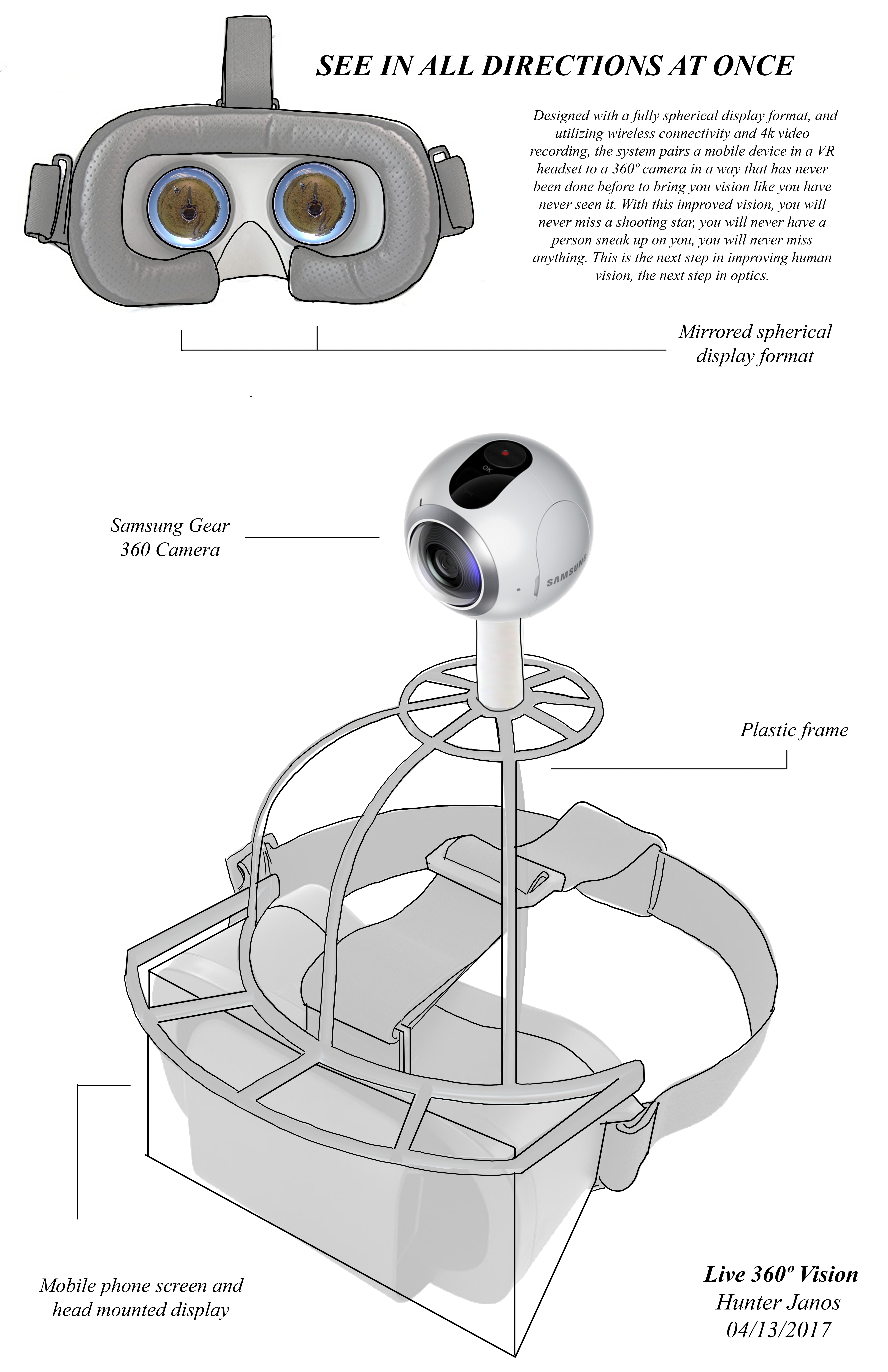Designed with a fully spherical display format, and utilizing wireless connectivity and 4K video recording, the system pairs a mobile device in a VR headset to a 360° camera in a way that has never been done before to bring you vision like you have never seen it. With this improved vision, you will never miss a shooting star, you will never have a person sneak up on you, you will never miss anything. This is the next step in improving human vision, the next step in optics.
My focus is on the interaction between perception and reality both biologically and philosophically. My artistic practices are rooted in exploring perception and reality in a scientific and conceptual way. I intend to expand human perception with my work, and improve our perception by helping us understand reality in a more perspective-free way. We can only see a small portion of our surroundings at once, due to our eyesight's 120° field of view. This limit, to me—is a flaw, like all limits on our perception.
In this project, I am developing a head mounted display (HMD) system that allows users to see their full 360° surroundings (both horizontally and vertically) all at once, to fully unlock single-point human visual perception. I will monitor the sensory and neural adaptation of the users of the device to analyze the cognitive developments the HMD system has helped them form.
This project is a biological and cognitive experiment and a technological development piece that is in conversation with an artistic and philosophical concept of reality without perception, or zeroth person perspective. Its goal is to both invent a new way of perceiving reality that is an improvement from our biological constraints, as well as inform a broader psycho-social understanding to the users of how perception is coming from a singular point, while reality exists as an infinite amount of possible points.
Freeing sight from its angular limitation is something that has a significant effect on the way a person interacts with reality and on their visual and cognitive functions. I want to document the cognitive and psychological experiences of test subjects who are testing the device, in order to more fully understand the 360° HMD system's effects, and how it enhances human perception.


United States Patent Application
APPLICATION NUMBER: 62/467,923
FILING DATE: March 7, 2017
INVENTOR: Benjamin J. Hunter, Los Angeles, CA
TITLE: Live 360° Vision (Head Mounted Display System)
STATUS: Provisional Patent Application Filed
FILING DATE: March 7, 2017
INVENTOR: Benjamin J. Hunter, Los Angeles, CA
TITLE: Live 360° Vision (Head Mounted Display System)
STATUS: Provisional Patent Application Filed
Receipt acknowledged by the United States Patent and Trademark Office for this provisional patent application. The filing represents a formal documentation of the innovative approach to expanding human visual perception through technological augmentation, positioning the 360° vision system as a novel contribution to head-mounted display technology and cognitive enhancement research.
Experimental Observations (February 4, 2017)
I am planning on conducting an experiment using a device I am developing at the California Institute of the Arts that connects a 360° video camera to a Virtual Reality headset and allows the wearer to see a full 360° around them without having to turn their head at all.
Beta1 Testing Notes: It takes about 10 minutes of wearing it to get used to moving around semi-comfortably. When you reach for things your sense of depth is greatly diminished. You need to reach further usually than you expect that you have to.
Stairs are extremely scary, walking up or down them is very frightening because you cannot really see your feet very well beyond your shoulders without leaning forward and looking down—which feels uncomfortable because you are so high up, and normally do not have to look so far down to see your feet.
Dissociative Effects: Your face does not feel like your face. It is a dissociative effect that makes you feel like you have left your body. When you touch your face, you feel like you are touching someone else's face, and are somehow feeling it—when you eat a bite of food, you feel as if you are feeding someone else. It is truly an out of body experience that is facially dissociative.